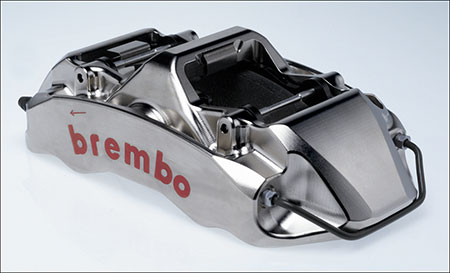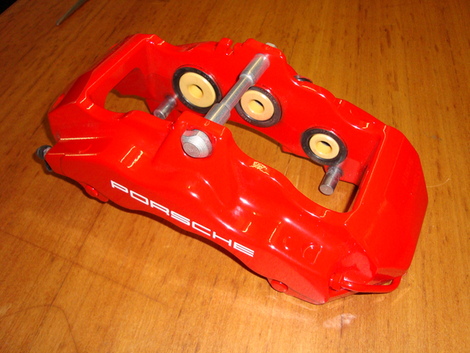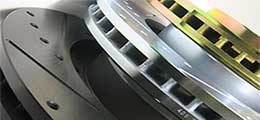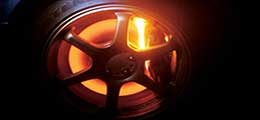
Caliper Clamping Pressure- What Effects It and How It Affects Braking Performance
In a high performance braking system, you will have integrated as standard a high performance brake caliper that has all the best features integrated.
A braking caliper that is made of strong materials will be resistant to flex or torsion, and multiple pistons will create more points of contacts on the brake pads. This combination of features will increase clamping force of the brake caliper over stock, and will do so without undesired consequences.
Installing a set of high performance brake rotors with only one of these features included will not benefit the braking system as both work together to accomplish the goal.
If you are looking to increase your vehicles stopping power, then a brake caliper swap is the most effective way to do this. It is important to note however that upgraded brake pads and rotors should accompany the upgrade as these parts help dissipate the heat created by the upgraded caliper, and will add to the braking stopping force gain.
Types of Brake Calipers
There are two main types of brake calipers, floating brake calipers and fixed brake calipers. A floating brake calipers will have only one brake piston in operation on one side of the caliper arm. A fixed brake caliper will have caliper pistons on both arms of the braking caliper to apply pressure to both ends of the rotor at the same time.
These caliper pistons only serve to apply pressure to the brake pads, however more pistons mean more pressure applied. Due to the nature of how hydraulic systems work, more piston surface area or pad surface applied to the brake rotor is not what increases clamping power or braking stopping force. What does increase the braking stopping force however is the use of multiple pistons in a braking caliper and or using larger diameter caliper pistons. More pistons and or larger diameter pistons result in a multiplication of mechanical force.
When the driver applies pressure to the brake petal from the drivers seat, this fluid pressure is applied at the end of the hydraulic line in the piston chamber. Because there are more piston chambers in a fixed caliper system, more brake fluid compression is needed. This added fluid compression is generated by increasing brake petal travel, however the force necessary to compress the petal doesn’t increase as a result.
6 Piston Fixed Brake Caliper
 *Source: http://www.tunersgroup.com
*Source: http://www.tunersgroup.com
You will often times see braking calipers with 4, 6, 8, or even 12 piston in one single brake caliper. These braking calipers are often used on race vehicles, but are also found on aftermarket setups that suit street vehicles.
Brake Caliper Supporting Materials
The added clamping force created when increasing the amount of piston caliper area will not benefit the driver unless the supporting caliper bracket material is designed to handle these added forces. Much like any other piece of metal, flex and torsion is inevitable at a certain threshold. The more pistons you have implemented in a high performance braking caliper, the stronger the alloy will need to be to handle the load. A reliable and trustworthy manufacturer of high performance brake calipers will test their parts under simulated loads to ensure they can handle the anticipated loads.
Brake Caliper Engineering
Additionally, a high quality performance braking caliper will have implemented graduated sizing of piston diameters in their braking caliper design. Front end pistons used in fixed position braking caliper systems will heat up faster than the rear caliper pistons. To compensate for this fact, front end pistons will have implemented smaller diameter sizing to even out the amount of heat created on the front end of the brake pad. Glazing on the front end of the brake pad will result in very poor brake handling during a race, so purchasing a brake caliper set with the proper engineering implemented is imperative.







